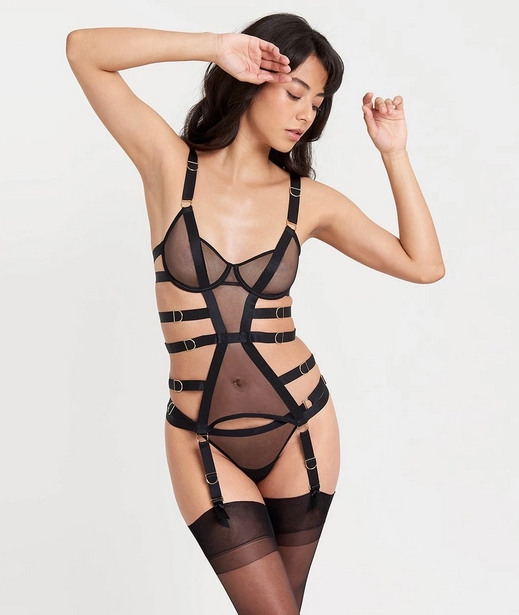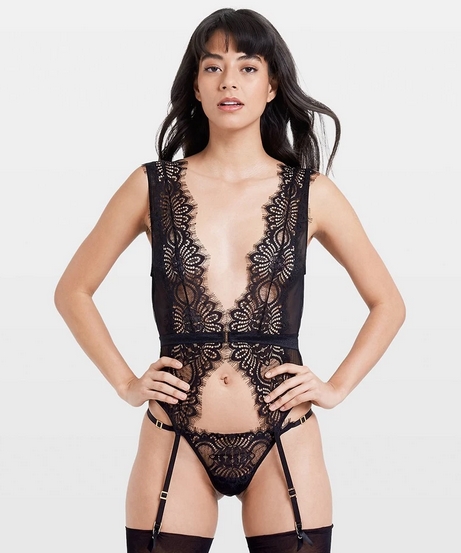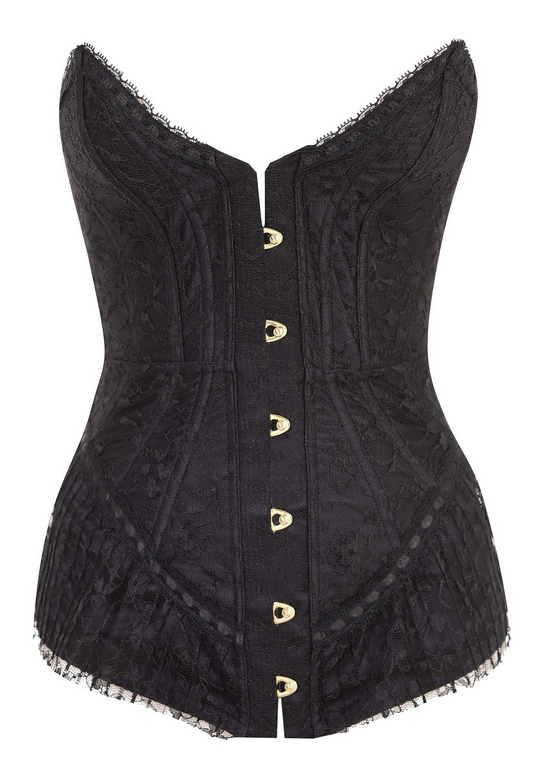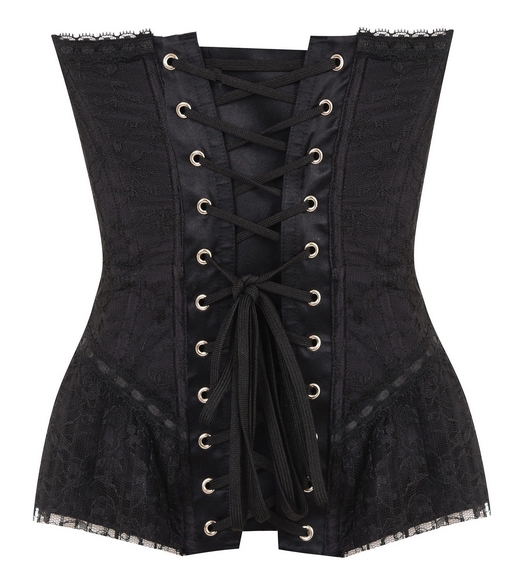Disclosure: This post may contain affiliate links. I receive a small commission at no cost to you when you make a purchase using my link.
Don’t let the name of this piece of lingerie intimidate you. Basque lingerie is a necessity for any modern, adventurous women’s lingerie drawer or closet.
We love a good silhouette moment, and the basque repeatedly delivers with its gentle lifting and smoothing capabilities, we also love it for being a little extra.
Read on to find out where the term basque originated from, a bit of the garment’s history, and how this form-fitting piece compares to its close relative, the corset.
What is Basque Lingerie?

Basque lingerie is essentially a long-form brassiere that offers light shapewear, usually sold as a set with matching underwear of any given cut. It serves to flatten and smooth the torso and breasts while offering a bit of support. It typically travels past the waist to sit on the hips, and this material is usually decorative.
Basque lingerie is usually made of lace, satin, silk, and may include ‘boning’ or stiff panels that provide support and shaping. Boning is typically made of flexible fibrous material or spiral steel.
Basque lingerie is also almost always inclusive of suspenders or garters for undergarments like stockings or tights. These may or may not be detachable.
Basque lingerie is highly favored for brides, and many will choose to wear this light shapewear under their dress in matching tones for, ahem, later.
Basque: A Unique History
Often, different pieces of lingerie get their names over time, usually as a nickname or a diminutive term. Babydoll lingerie is a great example of this, as is the term ‘bra’ for brassier.
Basque has a more murky, less obvious history as to how the garment first originated and how the name originated.
The term basque itself is a French term used to describe either a corset, a bodice, or a jacket with long tails. Odd, right? These items all had one thing in common – a cinched waist and a long-form. Furthermore, the trend at the time (roughly early to late Victorian era) for jackets were based on the actual Basque culture.
That’s right, basque lingerie is named after a style of jacket that was inspired by a very old culture of an ethnic group based roughly between France and Spain.
The garment itself is of course related directly to the bodices of the time. Bodices were usually worn over hoop skirts or bustles and meant to provide practical shape and support.
Modern-day basque lingerie is still worn under dresses or other garments but is more of a delicate novelty item that includes lace, cutouts, and other appliques rather than a practical addition to a Victorian outfit.

Basque Lingerie: How to Wear & Care
How to wash your Basque Lingerie:
Most lingerie pieces aren’t suitable for the washing machine. Unless the washing instructions say otherwise, always hand wash your basque piece in warm or cool water and lay flat to dry.
With basque lingerie, it holds shape, so avoid wringing it out as this will eventually cause it to warp slightly. Instead, press it gently between two large towels to absorb that extra water before laying it flat to dry.
Another option is dry cleaning and spot cleaning. If you only wear your basque lingerie every so often and don’t perspire much while in it, you can likely safely get away with spot cleaning. Take a damp cloth and gently rub it all over your piece.
If you have any stains, treat those with cold water – it may take some time, so be prepared. Another option would be to take it to a professional to have it dry cleaned. Usually, dry cleaning is reasonable in cost, and if it means you can keep your specialty lingerie in good shape for a while, why not?
How to put on Basque Lingerie:
Most pieces of basque lingerie are somewhat of a procedure to put on; some can come with up to 25 hook-and-eye clasps, which are the same clasps that come with traditional bras. They can also come with lace-up access. Some can even have both! It really depends on the brand.
If your basque lingerie only has hook-and-eye, we recommend putting it on backward and gently doing up the clasps, then fold the top portion down and delicately turning the garment frontwards and adjusting the top to your cleavage accordingly.
If your basque lingerie has lace-up access, then you may need some assistance — but the plus side is that this activity that can be a bit of fun for you and your partner. You can also choose to leave the laces permanently done-up for ease of access.

Basque Vs. The Corset
Basques and Corsets are often mistaken for one another or used as an interchangeable term. While they are very similar in the sense that they both offer shaping, support, and are rather a specialty lingerie item, they are different pieces.
Here are some key differences:
Shaping
Often, basques will have soft boning or shaping components – if at all; it’s not required of a basque to have boning. These are usually flexible materials that suit a range of body types.

On the contrary, corsets always have boning. They are boning — that’s their appeal. Corsets are used for waist training, costuming, bridal lingerie, and more. The boning in corsets is usually steel, and of course does not offer much flexibility – often making them suitable for only the “standard” body type, which is not ideal in the least.
Fastening
While it’s true that basques can and do have lacing, it’s not required and hook-and-eye fastening is more commonplace. However, corsets are required to have lacing. Lacing is how corsets achieve their shaping capabilities, and they usually have a waist reduction range of 4 inches, depending on the brand.

Backing
Basques can be nearly as small as a strapless bra or as large as a corset. They are very versatile and we know they offer flexible shaping. Corsets are always high backed, if not, the skin would bulge out from the edges.
Conclusion
Basque lingerie is a great option for those who aren’t interested in the novelty and restriction of a corset but who desire a similar silhouette and shaping capabilities.




Leave a Reply